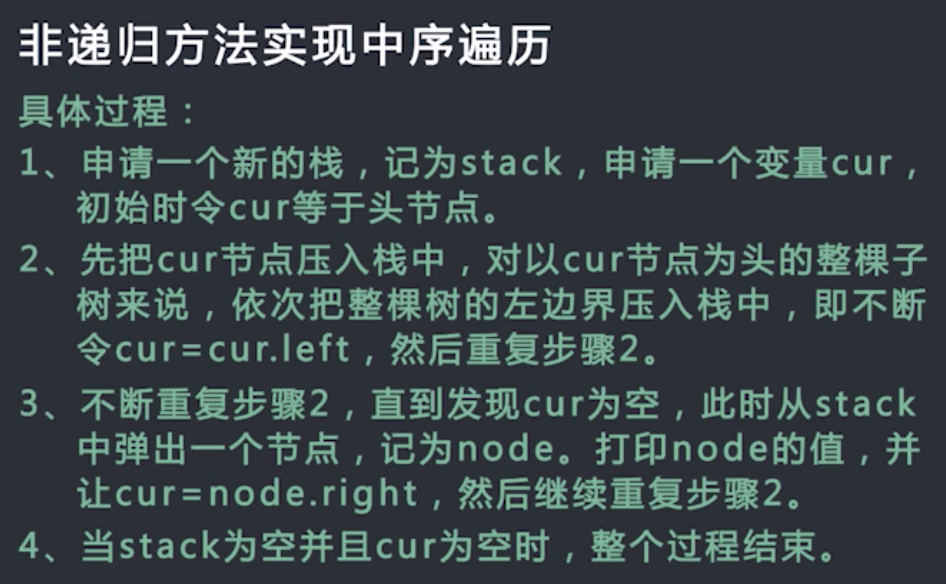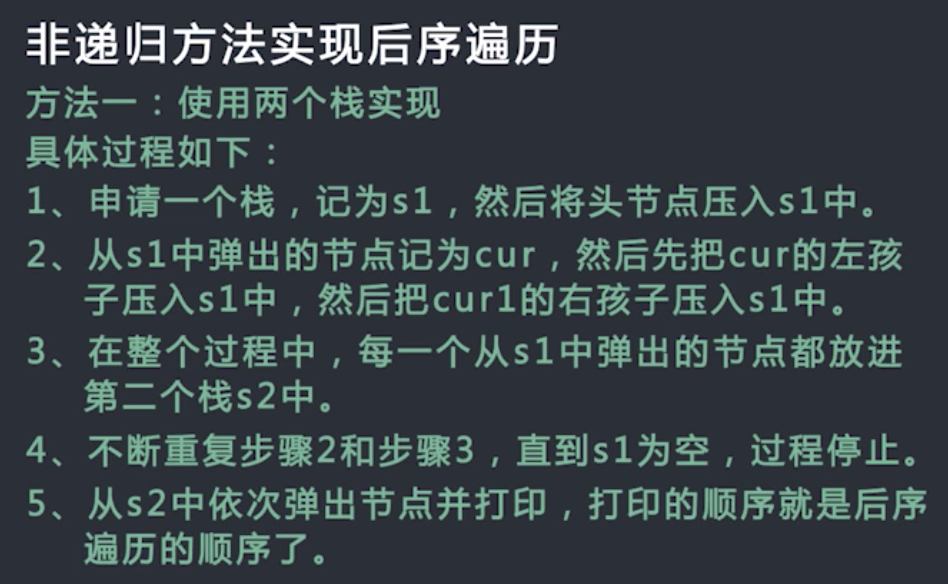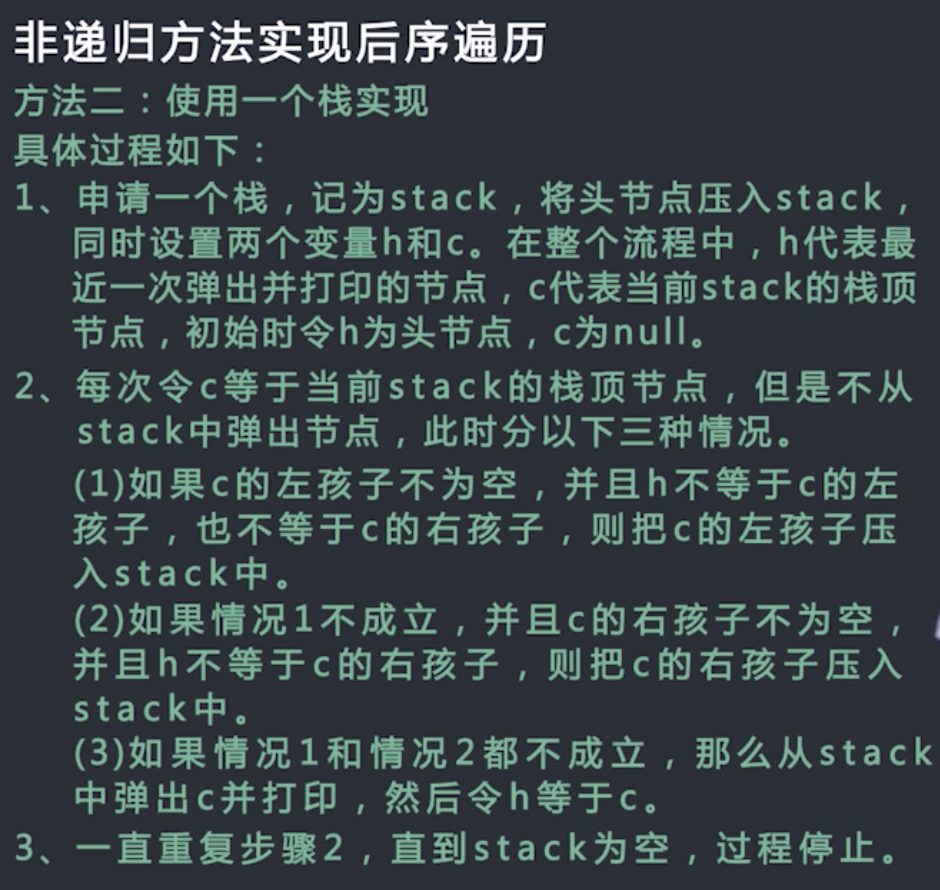1. 先序遍历的非递归实现
1 vector<int> pre_order(TreeNode* root){ 2 vector<int> res; 3 stack<TreeNode* > st; 4 if(root!=NULL) st.push(root); 5 while(!st.empty()){ 6 TreeNode* node = st.top(); 7 st.pop(); 8 res.push_back(node->val); 9 if(node->right != NULL) st.push(node->right); 10 if(node->left != NULL) st.push(node->left); 11 } 12 return res; 13 }
2. 中序遍历的非递归实现

1 vector<int> in_order(TreeNode* root){ 2 vector<int> res; 3 stack<TreeNode*> st; 4 if(root != NULL) st.push(root); 5 TreeNode* cur =root; 6 while(!st.empty()){ 7 // 如果cur为空,弹出栈顶元素,并将cur设置为弹出节点的右孩子 8 if(cur == NULL){ 9 res.push_back(st.top()->val); 10 cur = st.top()->right; 11 st.pop(); 12 }else // 否则继续找左孩子 13 cur = cur->left; 14 if(cur != NULL) 15 st.push(cur); 16 } 17 return res; 18 }
3. 后序遍历的非递归实现

// 后序遍历的非递归实现(双栈实现) vector<int> post_order(TreeNode* root){ vector<int> res; stack<TreeNode*> s1; stack<int> s2; if(root!=NULL) s1.push(root); while(!s1.empty()){ TreeNode* node = s1.top(); s1.pop(); s2.push(node->val); if(node->left != NULL) s1.push(node->left); if(node->right != NULL) s1.push(node->right); } while(!s2.empty()){ res.push_back(s2.top()); s2.pop(); } return res; }

1 // 后序遍历的非递归实现(单个栈实现) 2 vector<int> post_order_2(TreeNode* root){ 3 vector<int> res; 4 stack<TreeNode*> st; 5 TreeNode* last = root, *cur = NULL; 6 if(root != NULL) st.push(root); 7 while(!st.empty()){ 8 cur = st.top(); 9 // 如果左子树没遍历结束 10 if(cur->left!=NULL && last!=cur->left && last!=cur->right) 11 st.push(cur->left); 12 else if(cur->right!=NULL && last!=cur->right) 13 st.push(cur->right); 14 else{ 15 last = cur; 16 res.push_back(st.top()->val); 17 st.pop(); 18 } 19 } 20 return res; 21 }